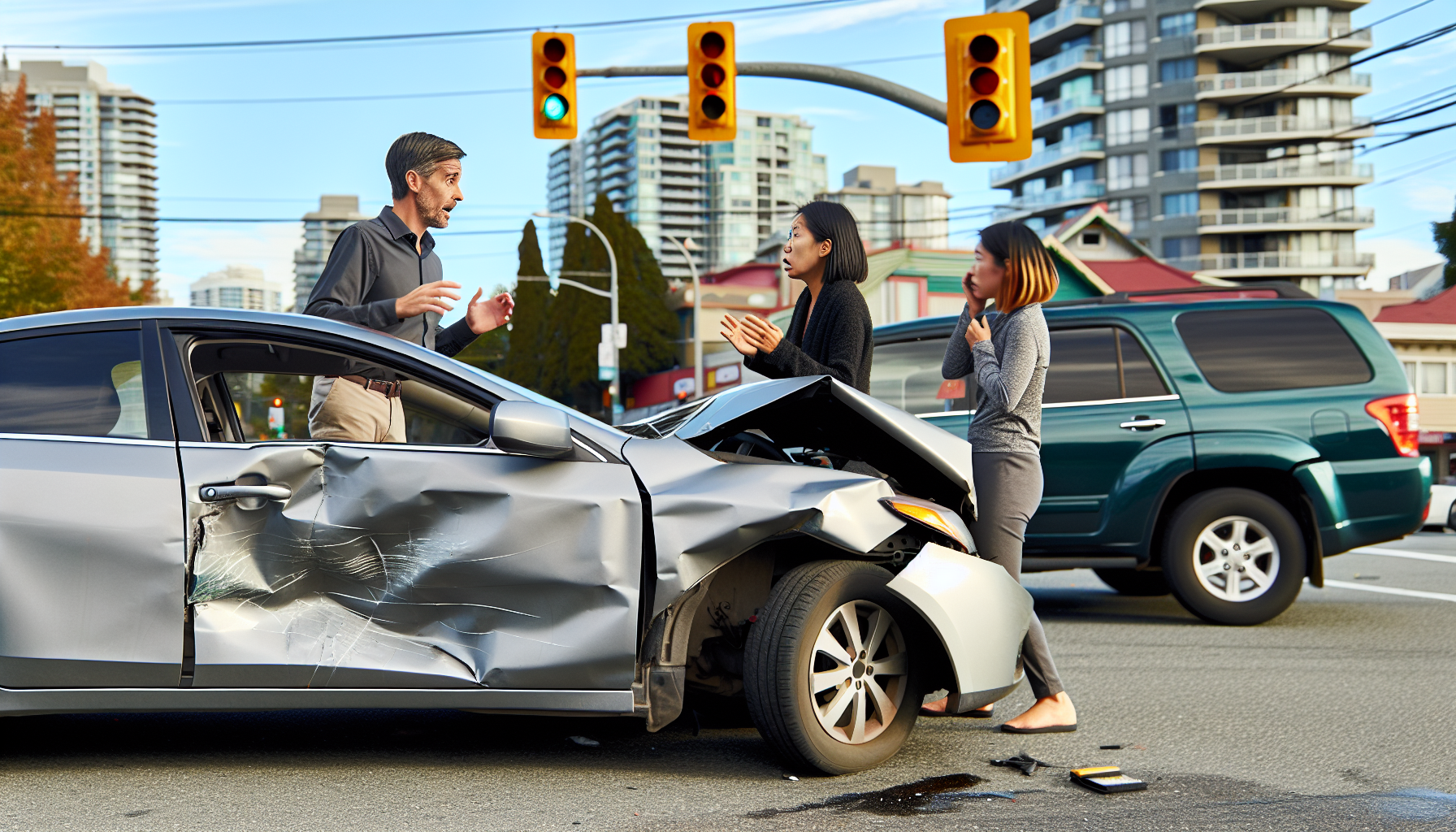What is auto insurance? It is a contract offering financial protection in events like accidents, theft, and vehicular damage. It’s not only necessary for legal compliance in most states, but it also cushions you against significant expenses that can arise from road mishaps. Throughout this article, you’ll learn about the fundamental coverage types, importance of policies, and financial nuances of what is auto insurance, equipping you with the knowledge to navigate the roads with confidence and financial security.

Auto insurance, in its most basic form, is a contract between you and an insurance company. This contract, also known as a car insurance policy, is designed to provide financial protection against potential losses that can occur due to accidents, damage, or theft. In essence, auto insurance acts as a protective shield against financial burdens stemming from unexpected road accidents.
One of the fundamental aspects of auto insurance is the coverage it provides. Primarily, auto insurance coverage includes liability and physical damage, which are provided by auto insurers. This means that your insurance policy provides coverage for you and other family members included in the policy, whether they are driving the insured car or someone else’s car with permission.
Auto insurance coverage can be divided into different categories, each designed to cover specific risks and expenses related to car accidents, damage, and theft. The fundamental elements of auto insurance include:
Physical damage coverage, a significant part of auto insurance, offers protection against any harm inflicted on the insured’s vehicle. This means that if your car is damaged in an accident, your auto insurance policy can help cover the cost of repairs. However, the extent of coverage and the cost of repairs covered by your insurance policy can vary depending on the specific terms of your policy.
Auto insurance is not only significant but also a legal obligation in the majority of states. Operating a vehicle without automobile insurance can lead to significant legal ramifications, such as the suspension of a driver’s license, financial penalties, and, in some cases, the possibility of imprisonment for repeated violations.
More than just a legal requirement, having auto insurance is crucial for your financial protection. In the event of an accident, the costs involved can be substantial. Auto insurance provides financial protection, mitigating these costs and ensuring that you’re not left in a financial bind following an accident.
Moreover, it proves advantageous to keep your auto insurance policy active even when your car is not in use. This can protect you from theft or vandalism, and also avoid a lapse in coverage, which insurers may view as risky.

Comprehending the various types of auto insurance coverage can assist you in making a judicious choice while selecting a policy. The coverage types include liability, collision, and comprehensive coverage, each offering different levels of protection. These coverages can protect you from financial loss in various scenarios, from accidents that are your fault to damages caused by factors beyond your control.
Liability coverage is a fundamental aspect of auto insurance, designed to cover the costs associated with property damage and/or injuries to another person resulting from an accident for which you are deemed at fault.
Physical damage coverage, on the other hand, can be broken down into two prevalent types: collision coverage and comprehensive coverage.
Another vital element of auto insurance is medical payments coverage, structured to cover medical expenses borne by you and your passengers due to injuries from a car accident, regardless of who is at fault.
Liability coverage is a mandatory requirement in most states for the legal operation of a vehicle. It is designed to cover the costs associated with property damage and/or injuries to another person resulting from an accident for which you are deemed at fault. This means that if you cause an accident that results in damage to another person’s property or bodily injury, your liability coverage will help cover these costs.
The primary categories of liability insurance coverage are bodily injury liability and property damage liability. Bodily injury liability covers expenses related to injuries or fatalities caused by you or another driver while operating your vehicle. On the other hand, property damage liability insurance covers the costs of damage to the property of others, such as damage to other vehicles, buildings, walls, fences, and equipment.

Collision coverage is designed to cover the cost of repairs in the event of damage to your car resulting from a car accident or collision with another object, such as a building or tree. This means that if your car is damaged in an accident, your collision coverage will help cover the cost of repairs, regardless of who is at fault.
The payout from your collision coverage is determined by an insurance adjuster who evaluates your car’s value based on comparable vehicles in the vicinity. If the repair costs exceed the car’s actual cash value, the car may be considered a total loss.
The minimum thresholds for collision coverage in auto insurance are typically $25,000 per person and $50,000 per accident for bodily injury and $25,000 for physical damage, although they may descend to as low as $5,000 or $10,000 in numerous states.

Comprehensive coverage is a type of insurance that covers damage to your car that occurs during non-collision events. This includes instances such as theft, vandalism, or natural disasters. This means that if your car is damaged by factors beyond your control, your comprehensive coverage can help cover the cost of repairs or replacement.
Comprehensive coverage is broad and encompasses an array of incidents. This includes:
However, it’s important to note that comprehensive coverage does not extend to theft if the policyholder is found to be involved in the theft of the vehicle.
Each state has its own laws and regulations when it comes to auto insurance. These laws dictate the minimum coverage requirements that drivers must meet to legally operate a vehicle. Violating these laws can result in severe penalties, including fines and the suspension of your driver’s license.
Beyond mandatory coverage requirements, there exist optional coverages that you can incorporate into your policy for enhanced protection. These optional coverages can provide additional financial protection in case of an accident or other incidents. While these coverages may increase your premium, they can also provide you with peace of mind knowing that you’re fully protected in case of an accident.
With the exception of New Hampshire, South Carolina, and Virginia, every state mandates drivers to maintain a minimum level of liability insurance. This means that drivers are required to have a certain amount of liability coverage to legally operate a vehicle. The minimum liability coverage required by most states is at least $25,000 for injuries per person and $50,000 per accident, although these limits may vary by state.
There are certain states that require no-fault auto insurance. These states include:
In these states, drivers are required to carry personal injury protection (PIP) coverage, which is designed to cover medical expenses regardless of who is at fault in an accident.

Optional coverages, such as:
These coverages can enhance your protection and provide additional financial security.
Personal injury protection (PIP) coverage functions by providing financial assistance for expenses like medical bills, lost wages, or funeral costs arising from injuries sustained in a car accident. This coverage ensures supplementary support beyond the scope of typical health insurance coverage. Gap insurance serves the purpose of settling your car loan in the event of theft or total loss, where the amount owed exceeds the car’s depreciated value. It proves advantageous in avoiding financial liability to your lender or lessor, bridging the disparity between your car’s value and the outstanding loan balance.
Over and above the types of coverages and state requirements, it is critical to understand the financial aspects of auto insurance. Two key components of this are premiums and deductibles.
Your auto insurance premium is the amount you pay for your insurance policy. This cost can vary based on a number of factors, including:
A deductible, on the other hand, refers to the specific amount that you are required to pay when initiating a claim before your insurance coverage kicks in. The amount of your deductible can have a significant impact on your premium. Typically, choosing a higher deductible can result in a lower premium, but it also means that you’ll be responsible for a larger portion of any claim amount.
Several factors can influence the amount you pay for auto insurance premiums. These factors include:
For instance, your driving record can have a significant impact on your premium. If you have a history of accidents or traffic violations, your premium is likely to be higher than someone with a clean driving record. Likewise, your location can also influence your premium. If you live in a high-population area with a higher risk of accidents, your premium will likely be higher than someone living in a low population area.
A deductible refers to the sum you pay out-of-pocket for a claim before your insurance coverage comes into effect. When choosing a deductible, it’s important to consider your personal budget, driving habits, and the type of coverage you’re obtaining.
Choosing a higher deductible can result in lower premiums. For instance, raising a $500 deductible to a $1,500 deductible can result in an average annual savings of $278. However, it’s important to remember that if you do need to make a claim, you’ll be responsible for paying the deductible amount out of pocket before your insurance coverage kicks in.
The typical deductible for auto insurance is $500, and it is settled each time a claim is filed to cover the cost of car repairs following an accident that the policyholder caused.
Although auto insurance is a necessary expense, there are strategies to reduce your auto insurance costs. Many insurance companies offer discounts and deals that can help lower your premiums. These discounts can be based on a variety of factors, such as your driving habits, the type of vehicle you drive, or certain safety features on your vehicle.
In addition to discounts, maintaining good driving habits can also help reduce your insurance costs. For instance, avoiding accidents and maintaining a clean driving record can indicate to insurers that you are a responsible driver, which can lead to reduced insurance rates. Furthermore, combining policies, such as merging home and auto insurance, can result in an average savings of approximately 15% on auto insurance premiums.
Insurance companies frequently provide a range of discounts and deals that can aid in reducing your auto insurance premiums. Some common discounts include:
Taking advantage of these discounts can help you save money on your auto insurance.
In addition to these discounts, many insurance companies also offer discounts for certain safety features on your vehicle, such as anti-theft devices, or for bundling your auto insurance with other types of insurance, such as homeowners or renters insurance. It’s always a good idea to ask your insurance company about the available discounts when purchasing or renewing your policy.
Your driving habits can considerably affect your insurance rates. Insurers often consider factors such as your driving record, the number of miles you drive, and whether or not you’ve had any accidents or traffic violations when determining your premium.
For instance, maintaining a clean driving record free from accidents or violations can lead to lower auto insurance premiums. Certain driving behaviors that contribute to the maintenance of a favorable driving record, which can result in reduced premiums, include:
By practicing these behaviors, you can help keep your driving record clean and potentially save money on your auto insurance premiums.
On the other hand, having a driving record that includes traffic violations or accidents can result in higher premiums.
Filing an auto insurance claim can appear challenging, particularly if you’re grappling with the aftermath of an accident. However, understanding the process and knowing what to expect can make the process much smoother.
The first step in filing a claim is to contact your insurance company as soon as possible after the incident. You’ll need to provide them with all the details of the incident, including the date and time, the location, the names and contact information of any other parties involved, and the details of what happened. You may also need to provide documents such as police reports, photos of the damage, and any other evidence that supports your claim.
It is advisable to initiate the claim process immediately or within 24 hours of the incident, if feasible, in accordance with the terms of your auto insurance policy. However, the specific time constraints may differ by state, typically allowing for a maximum of three years or less from the date of the accident to file a claim.
When filing a claim, you’ll need to provide your insurance company with all the necessary information and documentation. This includes:
Under certain circumstances, your insurance company may reject your claim. This can happen for a number of reasons, including if you’ve exceeded your policy limit, if you don’t have the necessary coverage for the incident, or if there are disputes about who was at fault.
If your claim is denied, you have the right to challenge the decision. You can do this by collecting evidence, consulting with your insurance broker or agent, and if necessary, hiring an auto accident attorney. If your initial efforts to contest the denial are unsuccessful, you can file a formal appeal.
Throughout this process, it’s important to communicate clearly and effectively with your insurer to resolve the issue.
Despite grasping the basics of auto insurance, you might still have queries. Here, we’ll address some of the most common questions about auto insurance.
For instance, one common question is whether your auto insurance policy covers rental cars. Typically, your personal car insurance extends coverage to rental cars with equivalent limits and deductibles as your own vehicle’s policy. However, it’s always a good idea to confirm with your insurer or credit card company to ascertain the extent of your coverage before renting a car.
In summary, understanding auto insurance doesn’t have to be overwhelming. By familiarizing yourself with the different types of coverages, understanding state requirements, and being aware of the financial aspects of auto insurance, you can make an informed decision and choose a policy that best suits your needs. Always remember that while auto insurance is a legal requirement, it’s also a crucial financial protection tool that can save you from significant financial loss in the event of an accident.
Auto insurance provides coverage for vehicle damages, property damage, bodily injuries, and medical expenses in case of accidents. It is a contract between you and the insurance company that protects against financial loss in the event of an accident or theft.
Having auto insurance is important because it protects you, your family, and other drivers, covering property damage, liability, and medical expenses. It is also required by law in most states to ensure that drivers have coverage for potential accidents.
Insurance is a way to manage your risk by purchasing protection against unexpected financial losses, where the insurance company will pay you or someone you choose if an accident occurs, preventing you from bearing all related costs.
State Farm is the #1 auto insurance in the US, accounting for 16.8% of all auto policies sold and maintaining a stellar customer service reputation. Choose State Farm for reliable coverage and excellent service.
Auto insurance coverages include liability insurance, personal injury protection, medical payments coverage, uninsured motorist coverage, collision coverage, and comprehensive coverage. These cover various aspects of protection for you and your vehicle.